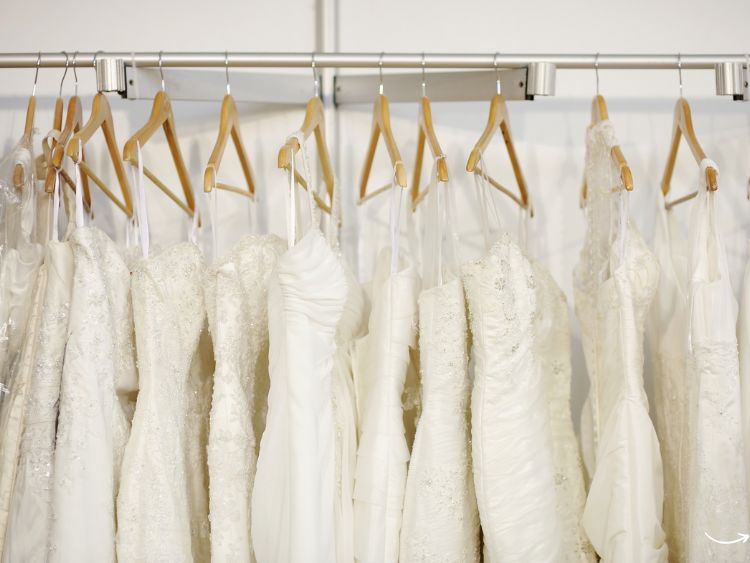Types of Tuxedos: A Comprehensive Guide
When it comes to dressing up for formal occasions, nothing beats the classic elegance of a tuxedo. But did you know there are several types of tuxedos to choose from, each with its own style and flair? Whether you’re attending a black-tie event, a wedding, or a formal dinner, understanding the different types of tuxedos can help you make the perfect choice for any occasion.
Tuxedos have long been the epitome of formalwear, representing sophistication, class, and timeless style. Yet, with the variety of styles available today, selecting the right tuxedo can be more complex than simply picking out a black suit. From the traditional black-tie to the contemporary shawl collar, this guide will walk you through the different types of tuxedos, helping you understand the nuances that make each one unique.
The Classic Black-Tie Tuxedo
When most people think of a tuxedo, the classic black-tie tuxedo is what comes to mind. This timeless option is perfect for formal events where elegance is a must.
Key Features:
- Jacket: Typically, the jacket is black or midnight blue, featuring satin or grosgrain lapels. The lapels can be peaked, shawl, or notch, with the peaked lapel being the most traditional.
- Pants: The pants usually have a satin stripe down the side, matching the lapel material. They are always black and should be tailored to fit perfectly.
- Shirt: A white dress shirt with a pleated front is standard, often worn with a bow tie.
- Accessories: Cufflinks, a cummerbund or waistcoat, and patent leather shoes complete the look.
The classic black-tie tuxedo is ideal for weddings, galas, and other formal evening events. It’s the safest and most traditional choice, ensuring you’ll never be underdressed.
The Modern Slim-Fit Tuxedo
For those who prefer a more contemporary look, the slim-fit tuxedo is a fantastic option. It’s designed to fit closer to the body, offering a sleeker silhouette.
Key Features:
- Jacket: The jacket is cut closer to the body, with narrower lapels. It may feature a single button and a more fitted look overall.
- Pants: Slim-fit pants have a narrower cut, often without pleats, creating a streamlined appearance.
- Shirt: A tailored dress shirt complements the slim-fit design, often with a spread or point collar.
- Accessories: Consider a slim tie or a bow tie, and modern, polished shoes to complete the ensemble.
The slim-fit tuxedo is perfect for younger gentlemen or those looking for a modern twist on the classic tuxedo. It’s versatile enough for both weddings and less formal events.
The Shawl Collar Tuxedo
The shawl collar tuxedo offers a softer, more relaxed look while still maintaining an air of sophistication. The rounded collar is its defining feature, giving it a unique appearance.
Key Features:
- Jacket: The jacket features a smooth, rounded shawl collar, usually made of satin. It may have one or two buttons, depending on the design.
- Pants: Traditional black or midnight blue pants with or without the satin stripe down the side.
- Shirt: A plain white dress shirt with minimal detailing is ideal.
- Accessories: A bow tie is a must with this style, along with patent leather shoes.
The shawl collar tuxedo is often chosen for formal dinners and black-tie optional events. Its unique collar makes it stand out while still adhering to traditional formalwear standards.
The Double-Breasted Tuxedo
For those who want to make a bold statement, the double-breasted tuxedo is a showstopper. It exudes confidence and a sense of fashion-forward thinking.
Key Features:
- Jacket: The double-breasted jacket has two rows of buttons, usually four or six, with a more structured, boxy fit. The lapels are often peaked or shawl.
- Pants: The pants are typically high-waisted to match the jacket’s classic design.
- Shirt: A traditional white dress shirt with a wingtip or classic collar is appropriate.
- Accessories: A bow tie, cufflinks, and dress shoes add to the overall elegance.
This tuxedo is ideal for formal events where you want to stand out. It’s perfect for those with a taller or more athletic build, as it emphasizes the shoulders and chest.
The White Dinner Jacket
A white dinner jacket is a sophisticated alternative to the traditional black tuxedo, especially suitable for warm-weather events or tropical settings.
Key Features:
- Jacket: The white dinner jacket is typically made of a lightweight material, with a single button and a shawl or peaked lapel. The jacket is often off-white or ivory rather than stark white.
- Pants: Black or midnight blue pants with a satin stripe are the norm, providing a striking contrast.
- Shirt: A pleated white dress shirt with a bow tie is standard.
- Accessories: Black patent leather shoes and a black cummerbund or waistcoat complete the ensemble.
The white dinner jacket is perfect for summer weddings, cruises, and other outdoor formal events. It offers a refreshing take on formalwear while still maintaining a high level of sophistication.
The Velvet Tuxedo
Velvet tuxedos have become increasingly popular for those looking to add a touch of luxury and texture to their formalwear.
Key Features:
- Jacket: The jacket is made from plush velvet, often in rich colors like deep green, burgundy, or navy. Shawl or peak lapels are common, and the jacket may have a single or double button.
- Pants: Black tuxedo pants are typically paired with a velvet jacket, keeping the look balanced.
- Shirt: A plain or pleated white dress shirt is ideal, letting the jacket take center stage.
- Accessories: A velvet bow tie can add a coordinated touch, while black patent leather shoes keep the look polished.
A velvet tuxedo is perfect for winter events, holiday parties, or any occasion where you want to make a stylish statement. It’s a luxurious choice that stands out in a crowd.
The Peak Lapel Tuxedo
The peak lapel tuxedo is a classic choice that exudes formality and sharpness. It’s often seen in the most traditional black-tie events.
Key Features:
- Jacket: The peak lapel is characterized by its upward-pointing edges. The jacket is usually black or midnight blue, with a satin finish on the lapels.
- Pants: The pants match the jacket and feature a satin stripe down the side.
- Shirt: A crisp white dress shirt with a pleated or plain front pairs perfectly with this style.
- Accessories: A black bow tie, cummerbund, or waistcoat, and patent leather shoes are essential.
The peak lapel tuxedo is the go-to for black-tie events, offering a sharp and defined silhouette that never goes out of style.
The Notch Lapel Tuxedo
The notch lapel tuxedo offers a slightly less formal option while still being appropriate for most black-tie events. The notch lapel is the most common lapel found on suits and tuxedos.
Key Features:
- Jacket: The notch lapel has a small cut-out where the lapel meets the collar. It’s often found on more contemporary tuxedo designs.
- Pants: Traditional tuxedo pants with a satin stripe complement the jacket.
- Shirt: A white dress shirt with a simple or pleated front works well with this style.
- Accessories: A bow tie or a regular tie can be worn, depending on the formality of the event.
This tuxedo style is ideal for those who prefer a modern twist on the classic tuxedo. It’s versatile and can be worn at weddings, proms, and other formal gatherings.
The Tailcoat Tuxedo
For the ultimate in formal attire, the tailcoat tuxedo is a timeless choice. It’s often reserved for the most formal of occasions, such as white-tie events.
Key Features:
- Jacket: The jacket features a shorter front with long tails at the back, usually with a peak lapel. It’s typically worn in black or midnight blue.
- Pants: High-waisted black pants with a satin stripe are standard, often without a belt.
- Shirt: A wingtip collar shirt with a bow tie and a white waistcoat is essential.
- Accessories: White gloves, a top hat, and patent leather shoes can be added for an extra touch of formality.
The tailcoat tuxedo is reserved for ultra-formal events, where traditional etiquette is observed. It’s a style that demands attention and respect.
FAQs About Types of Tuxedos
Q1: What’s the difference between a tuxedo and a suit? A tuxedo is defined by the presence of satin on the lapels, buttons, and stripes down the pant legs. A suit lacks these satin details and is generally less formal.
Q2: Can I wear a tuxedo during the day? While tuxedos are traditionally evening wear, some modern interpretations allow for daytime wear, especially with lighter colors like grey or white.
Q3: What’s the best tuxedo for a summer wedding? A white dinner jacket or a light-colored tuxedo in a breathable fabric is ideal for summer weddings.
Q4: How should a tuxedo fit? A tuxedo should fit comfortably without being too tight. The jacket should hug the shoulders, and the pants should be tailored without excess fabric.
Q5: Can I wear a regular tie with a tuxedo? While a bow tie is traditional, a slim black tie can be a modern alternative, depending on the formality of the event.
Conclusion
Choosing the right tuxedo is all about understanding the different styles and knowing which one best suits the occasion. Whether you opt for the timeless elegance of a classic black-tie tuxedo or the luxurious feel of velvet, your choice will reflect your personal style and the level of formality required. With this guide in hand, you’re now equipped to make an informed decision and confidently wear the tuxedo that best suits your needs.
Authoritative Links
These links provide additional information on tuxedo styles, etiquette, and how to wear them, ensuring you look your best at any formal event.







